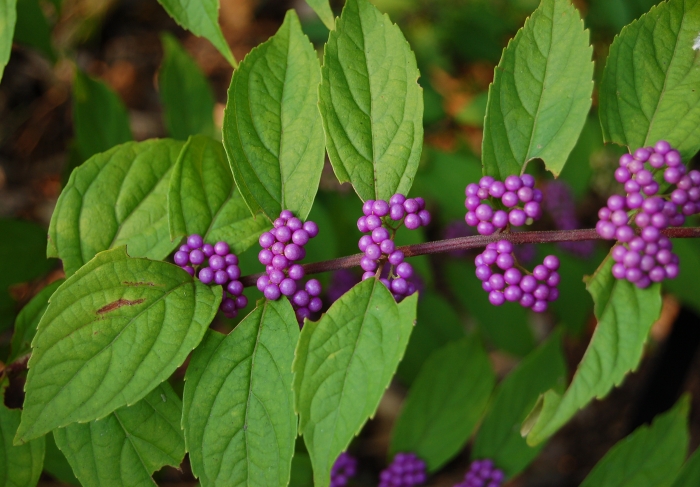Purple Beautyberry
(Callicarpa dichotoma)
Purple Beautyberry (Callicarpa dichotoma)
/
/

Photo (c)2007 Derek Ramsey (Ram-Man)
CC BY-SA 2.5
Image By:
Photo (c)2007 Derek Ramsey (Ram-Man)
Recorded By:
Copyright:
CC BY-SA 2.5
Copyright Notice:
Photo by: Photo (c)2007 Derek Ramsey (Ram-Man) | License Type: CC BY-SA 2.5 | License URL: https://creativecommons.org/licenses/by-sa/2.5 | Uploader: Ram-Man | Publisher: Wikimedia Commons | Title: Purple_Beautyberry_Callicarpa_dichotoma_'Early_Amethyst'_Berries_Closeup_2875px.jpg | Notes: {{Information |Description ={{en|1=Location taken: Behnke Nurseries, Potomac MD USA. Names: Callicarpa dichotoma 'Early Amethyst' , Early Amethyst Purple Beautyberry, Purple Beaut










































































Estimated Native Range
Summary
Callicarpa dichotoma, commonly known as Purple Beautyberry, is a deciduous shrub native to open woodlands, forest edges, and riverbanks in East Asia, including China, Vietnam, Korea, and Japan. It typically grows to a height of 2-4 feet (0.6-1.2 meters) and a width of 3-5 feet (0.9-1.5 meters), with a loose, gracefully arching form. The shrub is renowned for its striking clusters of glossy, vivid purple berries that persist into winter, providing a unique aesthetic appeal. The small, delicate flowers appear in summer, ranging in color from pink to purple and white, and are less showy than the berries that follow. The berries are a notable food source for birds and other wildlife.
Purple Beautyberry is valued for its ornamental berries, which can add a splash of color to the garden, especially in the fall and winter. It is commonly used in border planting, as a specimen plant, or for naturalizing in informal areas. This shrub thrives in full sun to part shade and prefers well-drained soil with consistent moisture. While it is relatively low-maintenance, occasional pruning can help maintain its shape and promote more prolific berry production. It is important to note that Callicarpa dichotoma can be potentially invasive outside its native range, so gardeners should check local regulations before planting.CC BY-SA 4.0
Purple Beautyberry is valued for its ornamental berries, which can add a splash of color to the garden, especially in the fall and winter. It is commonly used in border planting, as a specimen plant, or for naturalizing in informal areas. This shrub thrives in full sun to part shade and prefers well-drained soil with consistent moisture. While it is relatively low-maintenance, occasional pruning can help maintain its shape and promote more prolific berry production. It is important to note that Callicarpa dichotoma can be potentially invasive outside its native range, so gardeners should check local regulations before planting.CC BY-SA 4.0
Plant Description
- Plant Type: Shrub
- Height: 2-4 feet
- Width: 3-5 feet
- Growth Rate: Moderate
- Flower Color: Pink, Purple
- Flowering Season: Summer
- Leaf Retention: Deciduous
Growth Requirements
- Sun: Full Sun, Part Shade
- Water: Medium
- Drainage: Medium
Common Uses
Bee Garden, Bird Garden, Border Plant, Butterfly Garden, Deer Resistant, Drought Tolerant, Low Maintenance, Potted Plant, Street Planting
Natural Habitat
Open woodlands, forest edges, and riverbanks in East Asia
Other Names
Common Names: Early Amethist
Scientific Names: Callicarpa dichotoma , Callicarpa purpurea , Callicarpa gracilis , Callicarpa dichotoma f. albifructa , Porphyra dichotoma , Callicarpa jamamurasaki , Callicarpa japonica var. angustifolia , Callicarpa japonica var. dichotoma
GBIF Accepted Name: Callicarpa dichotoma (Lour.) K.Koch